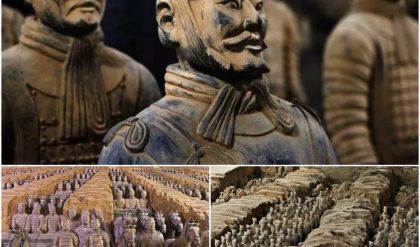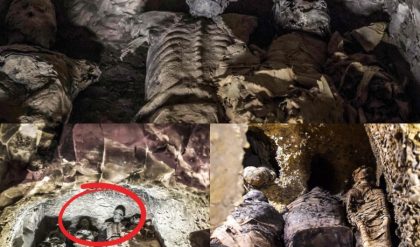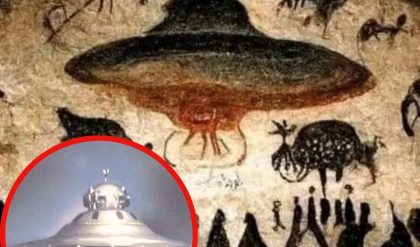In an extraordinary archaeological find, researchers have uncovered the mummified remains of ten crocodiles in an ancient tomb, shedding new light on the fascinating practices and beliefs of ancient Egyptian civilization. This unique discovery is one of the most significant finds in recent years, offering remarkable insights into the religious customs of the time, particularly the reverence for animals considered sacred.

A Rare Glimpse into Egypt’s Sacred Animal Cults
Ancient Egyptians often mummified animals as offerings to their gods, and crocodiles held special significance as symbols associated with Sobek, the powerful crocodile-headed god of water, fertility, and protection. The tomb, believed to date back over 2,000 years, was found with carefully preserved crocodiles that vary in size, from smaller juveniles to massive adults. Experts believe these mummified crocodiles were likely prepared as ritual offerings to honor Sobek, in hopes of securing his favor.
Unprecedented Preservation Techniques
The mummified crocodiles are exceptionally well-preserved, thanks to the Egyptians’ meticulous mummification techniques. Unlike other mummified animals, which were often simply wrapped in linen, these crocodiles were subjected to a detailed preservation process. Scientists have discovered that the embalmers used a combination of natural salts and oils, allowing these crocodiles to remain intact for millennia. The intricacy of their preparation reflects the crocodiles’ high status in the ancient Egyptian pantheon and the lengths Egyptians went to in ensuring these creatures’ preservation.
Symbolism and Belief in the Afterlife
In Egyptian mythology, crocodiles were more than just feared predators; they embodied divine qualities and were seen as creatures bridging the human and divine worlds. Sobek, the crocodile god, represented both the terrifying and protective aspects of nature, capable of blessing the land with fertile floods and guarding the people from danger. The presence of mummified crocodiles in a tomb is a testament to the Egyptians’ strong belief in the afterlife and their desire to honor deities through animal offerings, hoping to secure favor and protection for both themselves and their families.
Unlocking New Archaeological Mysteries
This find adds yet another layer to our understanding of ancient Egypt’s religious practices and the complexities of their burial customs. While other animal mummies, such as those of cats, dogs, and birds, have been widely documented, crocodile mummies are a rarer sight, making this discovery all the more intriguing. The detailed preservation also raises new questions about the resources and skills required for such mummification, suggesting a sophisticated level of knowledge among ancient Egyptian embalmers.
A Monumental Discovery for Egyptology
As scientists continue to study the crocodile mummies, they hope to uncover more about how these rituals were conducted, what materials were used in the preservation, and whether similar tombs could exist in other parts of Egypt. This discovery of ten mummified crocodiles has become a monumental addition to Egyptology, sparking excitement and curiosity worldwide about what further secrets may lie hidden beneath Egypt’s ancient sands.
This stunning find offers a captivating glimpse into the world of ancient Egypt, where gods walked beside animals, and even the fiercest of creatures were honored as sacred beings.





